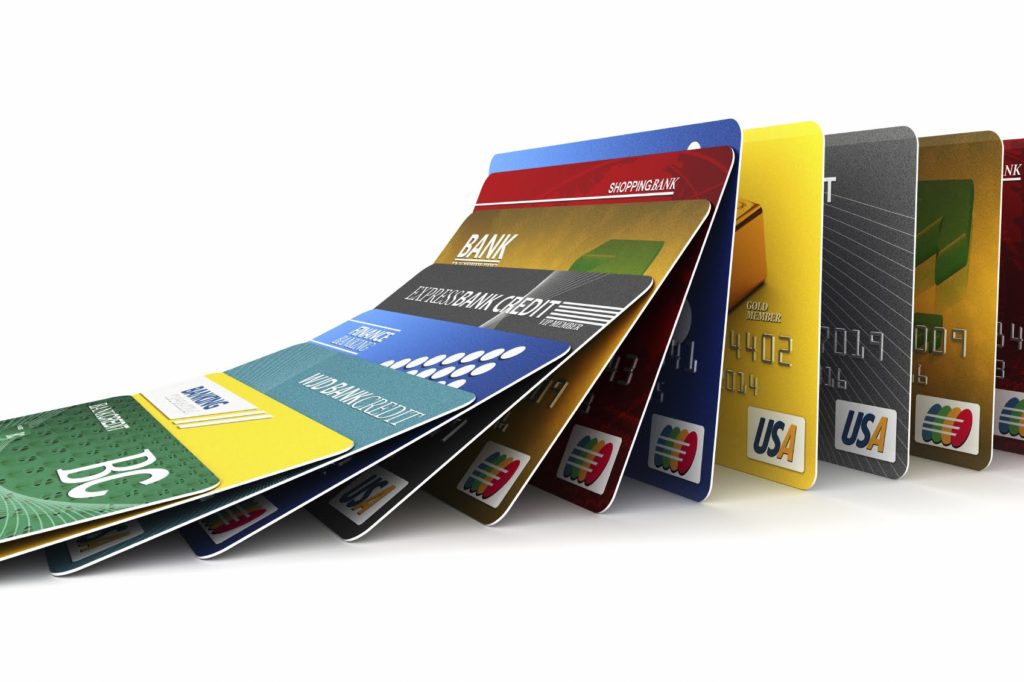by Peter Schiff

Could the house of credit cards Americans have built be on the verge of collapse?
Earlier this week, the New York Fed released the latest data on US household debt, revealing it has grown to a record $13 trillion. Americans have been spending, but they’ve been putting a lot of it on plastic. Credit card balances grew by $24 billion in the last quarter of 2017 alone. Meanwhile, US consumers owe $1.22 trillion on vehicle loans. This can only go on for so long. And their are indications that the American credit card spending spree may be winding down.
Retail sales unexpectedly fell in January, recording their biggest drop in nearly a year.
According to Commerce Department data released Wednesday, retail sales dropped 0.3% last month. Analysts had expected 0.2% increase. On top of that, the Commerce Department revised December retail sales downward to “unchanged” from the previously reported 0.4% increase.
Analysts say falling auto and building material sales drove the overall decline. Auto sales dipped 1.3% last month after slipping 0.1% in December. Building material sales saw the sharpest drop since April 2016, falling 2.4%.
So called “core retail sales” excluding autos, gasoline and building materials were unchanged last month after a downwardly revised 0.2% drop in December. According to a Reuters report, core retail sales correspond most closely with the consumer spending component of GNP.
Last month’s unchanged core retail sales reading pointed to a slowdown in consumer spending at the start of the year. The downward revision to December’s data suggested that the government could lower its fourth-quarter estimate for consumer spending.”
Consumer spending accounts for more that 2/3 of US economic activity.
There’s been a lot of talk about an improving economy over the last several months. Pundits and talking heads have pointed to relatively healthy economic growth. But could it be that this is all just a house of credit cards? And could that debt pyramid be in danger of collapsing?
Buying on credit is nice until the bills start coming due. And at some point, those bills always come due.
When an economy is growing based on credit, it creates the false illusion of prosperity. Products fly off the shelves, but it doesn’t represent real economic growth. It all has to be paid for in the future. That means consumers will have less disposable income down the road when it comes time to pay off those bills. When people buy on credit, they simply push future spending into the present. You can’t do that indefinitely.
There is another issue here nobody seems to be talking about – rising interest rates. Americans have a $834 billion credit card tab. Every time the interest rate goes up, minimum payments go up on those credit card bills. It takes longer to pay off the balances. And ultimately, it costs consumers more. That means consumers will have less available cash to spend in the future. Retail sales will fall.
This combination of high levels of debt and dropping retail sales should send up a big warning sign. It’s too early to know for sure, but it could be a sign that Americans are maxed out. They’ve hit those credit card limits and spending is slowing down. That doesn’t bode well for future economic growth. And if the debt bubble bursts, we’ll have a real mess on our hands.
But most mainstream pundits won’t bother to put 2 and 2 together. They rarely step back and look at overall dynamics. They report the numbers and then move on. As Peter Schiff said, the “fake financial news” is pretty clueless. But the rising debt levels and falling retail sales are two more signals that we may well be headed for some pretty turbulent waters.